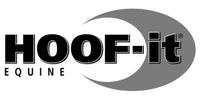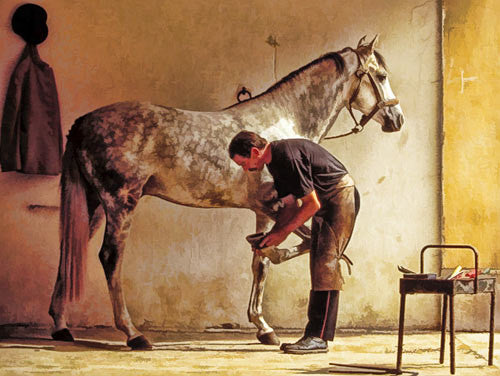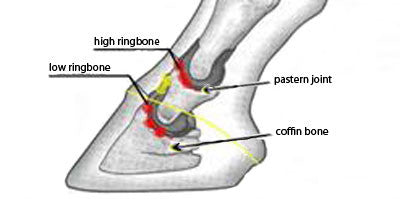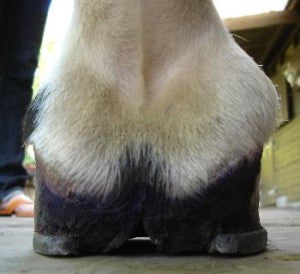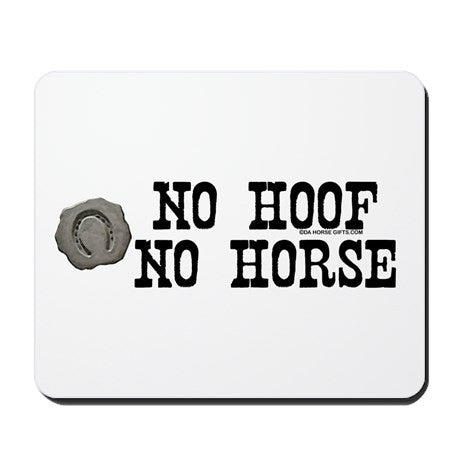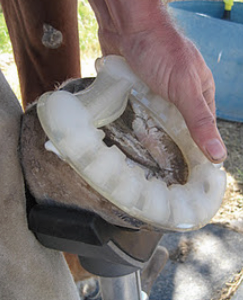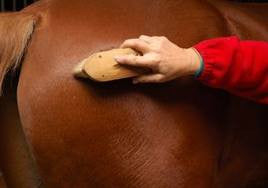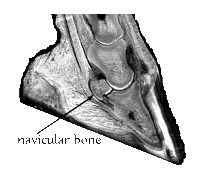Farrier Schools
“Education: the path from cocky ignorance to miserable uncertainty.” ― Mark Twain
-
Arkansas Horseshoeing School
22285 State Highway 154
Dardanelle, Arkansas 72834
Phone: 479-858-1011
Web site: www.arkansashorseshoeingschool.com
Email: info@arkansashorseshoeingschool.com
-
Auburn Horseshoeing Program
395 St. John Church Road
Notasulga, AL 36866
334-332-0545
-
Butler Professional Farrier School
495 Table Road
Crawford, Nebraska 69339
Phone: 800-728-3826 (press 3)
Or 308-665-1510
Fax: 308-665-1520
Web site: www.butlerprofessionalfarrierschool.com
Email: info@butlerprofessionalfarrierschool.com
-
“C” Horse Forge School of Horseshoeing
Corpus Christi/Padre Island, Texas USA
Frank Cadena (Instructor) 361-232-3773
web site: www.cadenaforge.com
E-mail: ninac21wmg@hotmail.com
-
The Canadian Farrier School
Calgary, Alberta Canada
Gary Johnston – Instructor
403-359-4424 or 403-458-4424
web site: www.canadianfarrierschool.ca
E-mail: gary@canadianfarrierschool.ca
-
The Canadian Horseshoeing School
415316 41st Line, RR #2
Embro, Ontario N0J 1J0 Canada
519-349-2900
web site: www.c-h-s.ca
E-mail: chs@quadro.net
-
Carolina School of Horseshoeing LLC
1937 West Palmetto Street
PMB 1
Florence, South Carolina 29501 USA
843-230-1128
email: carolinaschoolofhorseshoeing@yahoo.com
web site: www.carolinaschoolofhorseshoeing.com
-
Casey & Son Horseshoeing School
14013 East Highway 136
LaFayette, Georgia 30728 USA
706-397-8909
web site: www.caseyhorseshoeing.com
E-mail: RCaseySch@aol.com
-
Colorado School of Trades
1575 Hoyt Street
Lakewood, Colorado 80215 USA
303-233-4697
-
Colorado State University
Equine Sciences Department
Fort Collins, Colorado 80523 USA
970-491-8373
-
Cornell University Farrier Short Course
Cornell University
Ithaca, New York 14853 USA
607-253-3127
-
Cowtown Horseshoeing School
P.O. Box 841
Miles City, Montana 59301 USA
406-232-3362
E-Mail: horseshoe@mcn.net
-
Danny Ward’s Horseshoeing School
51 Ward Road
Martinsville, Virginia 24114 USA
540-638-7908
-
East Texas Horseshoeing Clinics
and Horseshoeing How-To Video
Route 4, Box 731
Altanta, Texas 75551 USA
903-796-9308
E-mail: ethclinics@aol.com
Web site: www.easttexashorseshoeing.com
-
Education Center of Japan Farriers Association
1829-2
Tsuruta, Utsunomiya
Tochigi, 320 Japan
0286-48-0007
-
Equine Educational Services
P.O. Box 413
O’Fallon, Illinois 62269 USA
618-632-7921
E-mail: equine74@hotmail.com
-
Far Hills Forge
2391 Ringhoffer Road
Bethlehem, PA 18015 USA
610-748-8775
cell: 908-797-4433
-
Five Star Horseshoeing School
Rt. 2 Box 420
Minco, OK 73059 USA
405-352-5920
-
Heartland Horseshoeing School
327 SW 1st Lane
Lamar, Missouri 64759 USA
417-682-6896
Web Site
-
Institute of Applied Equine Podiatry
PO Box 111838
Naples, Florida 34108
410-937-4458
Web Site
-
Kentucky Horseshoeing School
3612 Lexington Road
Richmond, Kentucky 40475
800-626-5359
859-575-4063
859-575-4068 (fax)
E-Mail
Web site: www.kentuckyhorseshoeingschool.com
Owner: Mitch Taylor
-
Kwantlen University College Langley Campus
P.O. Box 9030
Surrey, British Columbia V3T 5H8 Canada
604-599-3229
-
Lookout Mountain School of Horseshoeing
400 Lewis Road
Gadsden, Alabama 35901 USA
205-546-2036
E-mail: tmcnew@microxl.com
web site: www.horseshoeingschool.net
-
Maryland Horseshoeing School
11200 Wolfsville Rd.
Smithsburg, Maryland 21783 USA
(301)416-0800
E-mail: mdhorseshoeing@xecu.net
web site: www.lrn2shoe.com
-
Maritime Farrier School
R.R. 3
Truro , Nova Scotia B2N 5B2 Canada
web site: www.maritimefarrierschool.com
-
Merced College
3600 M Street
Merced, California 95348 USA
209-384-6250
-
Meredith Manor International Equestrian Centre Farrier School
147 Saddle Lane
Waverly, West Virginia 26184 USA
800-679-2603
Web Site
-
Mesalands Community College
Farrier Science Program
911 S. 10th Street
Tucumcari, New Mexico 88401 USA
505-461-4413 Ext:158
E-mail: eddym@mesalands.edu
www.mesalands.edu
-
Midwest Horseshoeing School
1398 Horse Farm Road
Divernon, Illinois 62530 USA
217-899-8918
www.midwesthorseshoeingschool.com
email: midwesthorseshoeingschool@yahoo.com
-
Minnesota School of Horseshoeing
6250 Riverdale Drive, N.W.
Ramsey, Minnesota 55303 USA
763-427-5850
Web Site
E-mail
-
Mission Farrier School
17028 Trombley Rd.
Snohomish, WA 98290 USA
425-890-3043
email: MissionFarrierSchool@Hotmail.com
www.MissionFarrierSchool.com
-
Montana State University Horseshoeing School
119 Linfield Hall
Bozeman, Montana 59717 USA
406-994-3721
-
North Carolina School of Horseshoeing and Equine Lameness
P.O. Box 921
Pilot Mountain, North Carolina 27041 USA
336-994-9497
-
Northwest College
231 West 6th Street
Powell, Wyoming 82435 USA
307-754-6601
-
Northwest Community College
Box 1277
Houston, BC V0J 1Z0 Canada
250-845-7266
-
Northwest School of Horseshoeing
Route 2, Box 232-A
Walla Walla, Washington 99362 USA
-
Oklahoma Horseshoeing School
Route 1, Box 281
Purcell, Oklahoma 73080 USA
800-538-1383
-
Oklahoma State Horseshoeing School
Route 1, Box 28B
Ardmore, Oklahoma 73401 USA
405-223-0064
-
Olds College
4500-50 Street
Olds, AB T4H 1R6 Canada
403-556-8251
403-507-7966
web site: www.oldscollege.ab.ca
-
Oregon Farrier School
PO Box 17601
Salem, Oregon 97305 USA
503-901-7651
email: oregonfarrierschool@msn.com
-
Pacific Coast Horseshoeing School, LLC
5225 Carbondale Road
Plymouth, California 95669 USA
209-245-3920
fax: 209-245-3956
web site: www.farrierschool.com
-
Pennsylvania Institute for Horseshoeing
3586 Big Dream Lane
Tyrone Pennsylvania 16686 USA
814-692-7496
web site: www.pafarrierschool.com
-
Pikes Peak Community College
322 Sunbird Cliffs Lane, West
Colorado Springs, Colorado 80919 USA
719-540-7348
-
Prairie Farrier School
Box 468
Clavet, Saskatchewan
Canada S0K 0Y0
(306) 717-7635
web site: www.prairiefarrierschool.com
-
Shur Shod Horseshoeing School
P.O. Box 119
Cimarron, Kansas 67835 USA
316-855-2303
-
Sierra South Horseshoeing School
25040 Old Julian Highway
Ramona, California 92065USA
760-788-8115
E-mail: info@sierrahorseshoeing.com
Web site: www.sierrahorseshoeing.com
-
Sunshine Coast Farrier & Blacksmith Academy
Lot 1-2 Grady’s Lane
Kin Kin, Australia
07-54854678
mark@smartfarrier.com
www.smartfarrier.com
-
Sul Ross State University
Box C-110
Alpine, Texas 79832 USA
915-837-8200
-
Texas Horseshoeing School
Box 188
Scurry, Texas 75158 USA
214-452-3159
-
Tim Goolsby Farrier Apprentice Program
4565 Sherrilltown Road
Watertown, Tennessee 37184 USA
615-237-3755
www.goolsbyfarrierprogram.com
-
Tucson School of Horseshoeing
2230 N. Kimberlee Road
Tucson, Arizona 85749 USA
520-749-5212
-
Turley Forge Blacksmithing School
(This school emphasizes blacksmithing.)
919-A Chicoma Vista
Santa Fe, New Mexico 87501 USA
505-471-8608
Web site: www.turleyforge.com
-
Victory Mountain Forge Farrier School
9163 E. Merrick Road
Lava Hot Springs, Idaho 83246 USA
208-776-9825
Website: www.victorymountainforge.com
E-mail: info@victorymountainforge.com
-
Village Farrier School
51566 Range Road 223
Sherwood Park, AB T8C 1H4 Canada
780-922-3672
www.villagefarrier.com
e-mail: andy@villagefarrier.com
-
Walla Walla Community College
500 Tausick Way
Walla Walla, Washington 99362 USA
509-527-4291
-
Western School of Horseshoeing
2801 W. Maryland Avenue
Phoenix, Arizona 85017 USA
602-242-2560
800-542-2560
fax: 602-242-6670
www.western-horseshoeing.com
e-mail: westernt@qwest.net
-
Wolverine Farrier School
3104 E. Stevenson Lake Rd.
Clare, Michigan 48617 USA
989-386-7430
